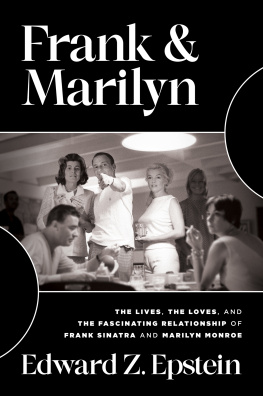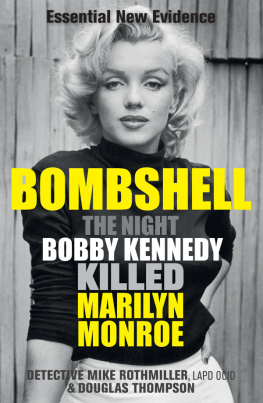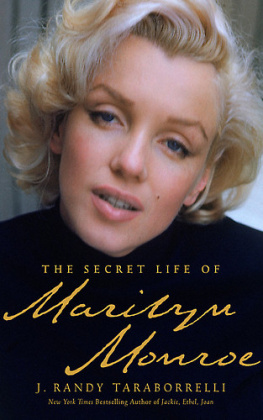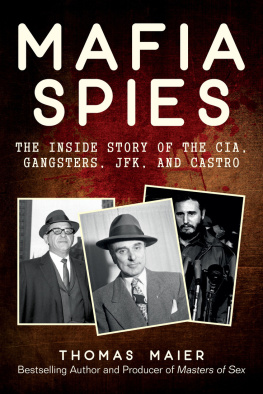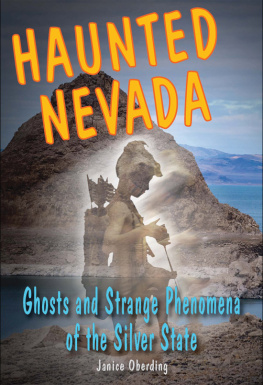
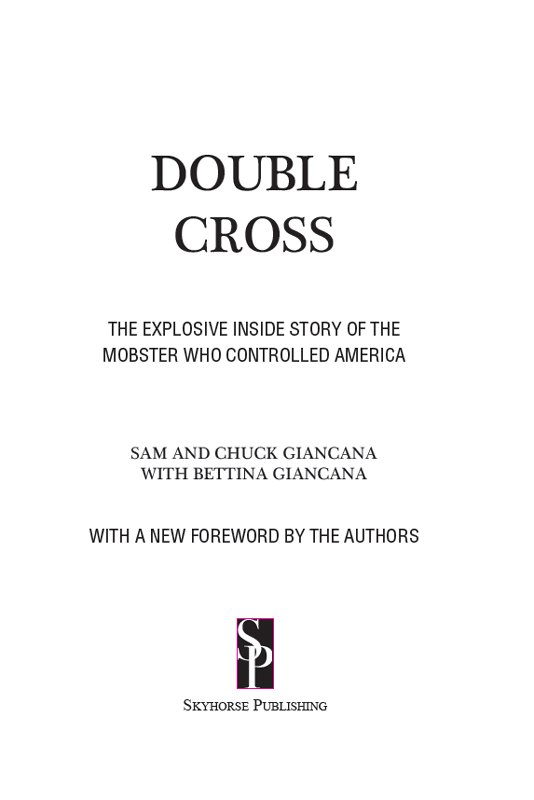
Copyright 2014, 1992 by Sam Giancana, Chuck Giancana, and Bettina Giancana Foreword copyright 2014 by Bettina Giancana and Sam Giancana
All Rights Reserved. No part of this book may be reproduced in any manner without the express written consent of the publisher, except in the case of brief excerpts in critical reviews or articles. All inquiries should be addressed to Skyhorse Publishing, 307 West 36th Street, 11th Floor, New York, NY 10018.
Skyhorse Publishing books may be purchased in bulk at special discounts for sales promotion, corporate gifts, fund-raising, or educational purposes. Special editions can also be created to specifications. For details, contact the Special Sales Department, Skyhorse Publishing, 307 West 36th Street, 11th Floor, New York, NY 10018 or info@skyhorsepublishing.com.
Skyhorse and Skyhorse Publishing are registered trademarks of Skyhorse Publishing, Inc., a Delaware corporation.
Visit our website at www.skyhorsepublishing.com.
10 9 8 7 6 5 4 3 2 1
Paperback ISBN: 978-1-62636-125-6
eISBN: 978-1-62873-867-4
The Library of Congress has cataloged the 2010 edition as follows:
Giancana, Sam, 1954
Double cross : the explosive, inside story of the mobster who controlled America / Sam and Chuck Giancana.
p. cm.
ISBN 978-1-60239-778-1 (pbk. : alk. paper)
1. Giancana, Sam, 1908-1975. 2. Criminals--United States--Biography. 3. Mafia-- United States--History--20th century. I. Giancana, Chuck, 1922- II. Title.
HV6248.G38G53 2010
364.1092--dc22
[B]
2009034644
Printed in the United States of America
Until 1969, our family was held captive by the legacy of Chicago Mob boss Sam Giancana. At that time, we mistakenly thought that by changing our last name, we could escape the very real stigma attached to being related to a notorious gangster. It was an act whose logic ultimately proved faulty, for it succeeded in stripping us of our rich Italian heritage, to say nothing of our friends and family. Hiding behind a mask, we denied our very existence, creating merely the illusion of normalcy. It was an illusion only we could dispel. This book is dedicated to the person who showed us that only by removing the mask can we ever truly hope to see ourselves.
The saga of Sam Giancana, its social and historical significance aside, would never have reached a single reader without the sincere enthusiasm of our literary agent, Frank Weimann; for his tireless efforts and friendship, we are indebted. Nor could this story have come to life with such grace and power without the expert guidance of our editor, Rick Horgan; for his tremendous vision and encouragement, we are deeply grateful.
CONTENTS
FOREWORD
When Double Cross came out in 1992, it became an instant New York Times bestseller. Published in twelve countries, it created a firestorm of controversy and an avalanche of questions. First and foremost of these questions was Can this really be true? Our answer thenand nowis that Double Cross presents an accurate portrait of Chicago Mob boss Sam Giancana and his involvement in some of the most dramatic events of the twentieth century, events that changed the course of history.
Today, over twenty years later, we can unequivocally state that not only is the book accurate, but many of its shocking revelations have now been confirmed by academics, politicians, and members of investigative government agencies as well as those personally involved. Indeed, Robert Kennedy, Jr., recently told interviewer Charlie Rose that he had reason to believe that his uncle, President John F. Kennedy, was the victim of a murderous conspiracy that included organized criminals. He further stated that his own father, Robert Kennedy, also believed this to be true. For those naysayers who attempt to refute Double Cross , we can only say that, as of this date, no one has been able to disprove its claims.
But the purpose for this new foreword is not to tout the books credibility, but rather to add to the current record. Since 1992, much has come to light regarding the life and times of Sam Giancanain particular his mysterious absence from the Chicago scene while living in Mexico between 1966 and 1974. With the wealth of new information we have obtained, we have concluded that Giancanas murder was largely the consequence of his actions during this eight-year period in combination with his involvement with rogue elements of the CIA.
To fully understand the circumstances surrounding Giancanas death, we must revisit his younger days with Chicagos notorious 42 gang. There, he rose among the ranks thanks to his sociopathic ruthlessness and amazing talent for bringing in the cash through illegal gambling operations. Throughout Giancanas criminal career, gambling continued to be his forte.
Once fully ensconced in the Chicago Syndicate, Giancana broadened his financial interests, growing a small empire based on policy and numbers rackets. It is at this juncture that he likely met the criminally gifted King of Slots, Eddie Dutch Vogel, who controlled illegal slot machines, pinball, and vending rackets throughout the region. It is also at this time that he crossed paths with a brilliant and highly ambitious student of VogelsHyman Red Larner. Dubbed by the press The Outfits Mystery Man and The Ivy League Mobster, Larner struck up a relationship with Giancanaa relationship that, some thirty years later, would lead directly to the Mob bosss demise.
Appearing publicly only once, during the McClellan Committee investigation in 1959, Larner was a low-profile mobster who counted Meyer Lansky among his close associates. Working under Giancana, Larner expanded the old Vogel rackets, which now exploded across the nation. In the 1960s, he began acting as one of Giancanas international front men, making high-level contacts that would enable Giancana to further his illegal gambling empire throughout the world.
In 1966, when Giancana moved to Cuernavaca, Mexico, he was not in exile as some have claimed. The information that we have obtained tells us that he was putting together, with Hyman Larner, what many believe would become the most lucrative gambling enterprise in history. From Mexico, this venture moved into the Caribbean and Central and South America, where the two men set up gambling on cruise ships and in ports of call. Through payoffs, they bought protection from dictators and Presidents south of the border, in particular Panamas infamous Manuel Noriega. They also ingratiated themselves with what would become Colombias Medelln cartel, engaging early members as part of their operation. It was thanks to this revenue stream that the first Colombian cartel was born.
By the 1970s, Giancanas international gambling ventures were bringing in millions, with a share of its profits dutifully delivered to the Chicago Outfit. When the operation began flying gambling supplies from Miami to Panama and flying back with a load of cocaine, Florida Mob boss Santo Trafficante also received a cut. Although cocaine trafficking was still in its infancy, the money was good. Perhaps, too good.
Across the border, the FBI had been taking notice of Giancanas activities. In 1974, pressure was placed on the Mexican government and he was deported to the United States and served a subpoena to testify before a Chicago grand jury.
Back in Chicago, Giancana gave up nothing to the grand jury and, with Larner at the helm south of the border, continued to oversee his empire. The enormous wealth it was now generating did not go unnoticed by his cronies Tony Accardo, Joey Aiuppa, and Floridas Trafficante, who let it be known that that they were not receiving a fair share of the profits. Larner was also unhappy; hed been watching Giancana line his own pockets long enough and was pushing for a change in leadershipa change that would place him in control of the international gambling enterprises.
Next page

